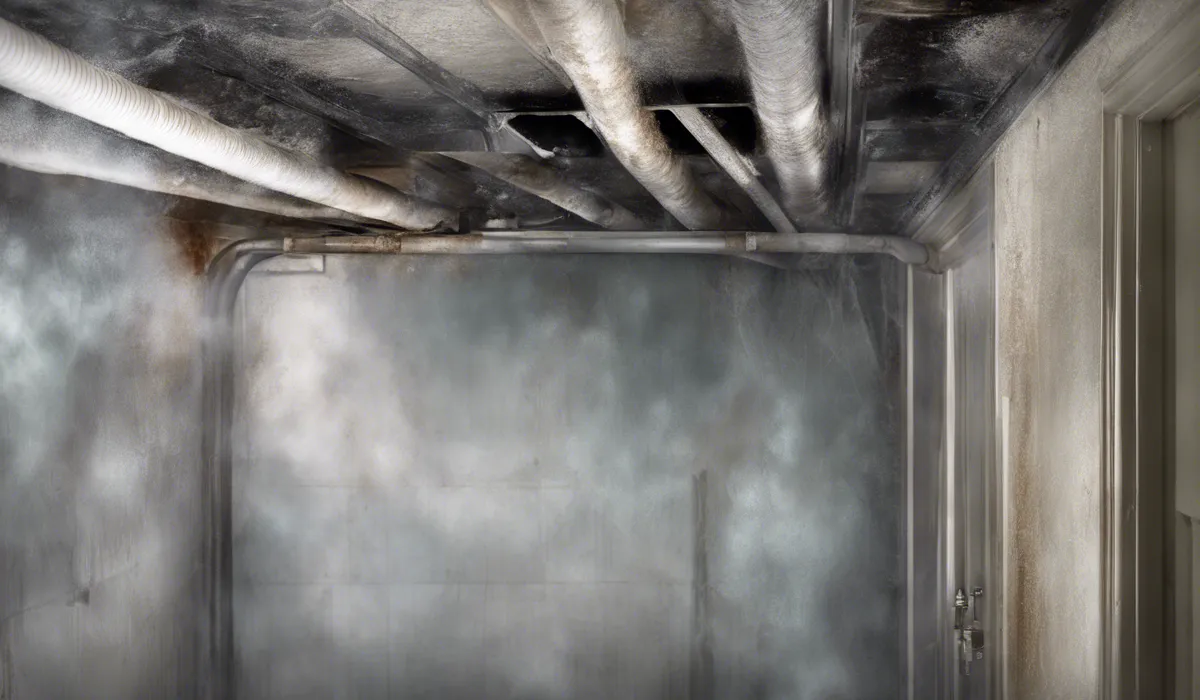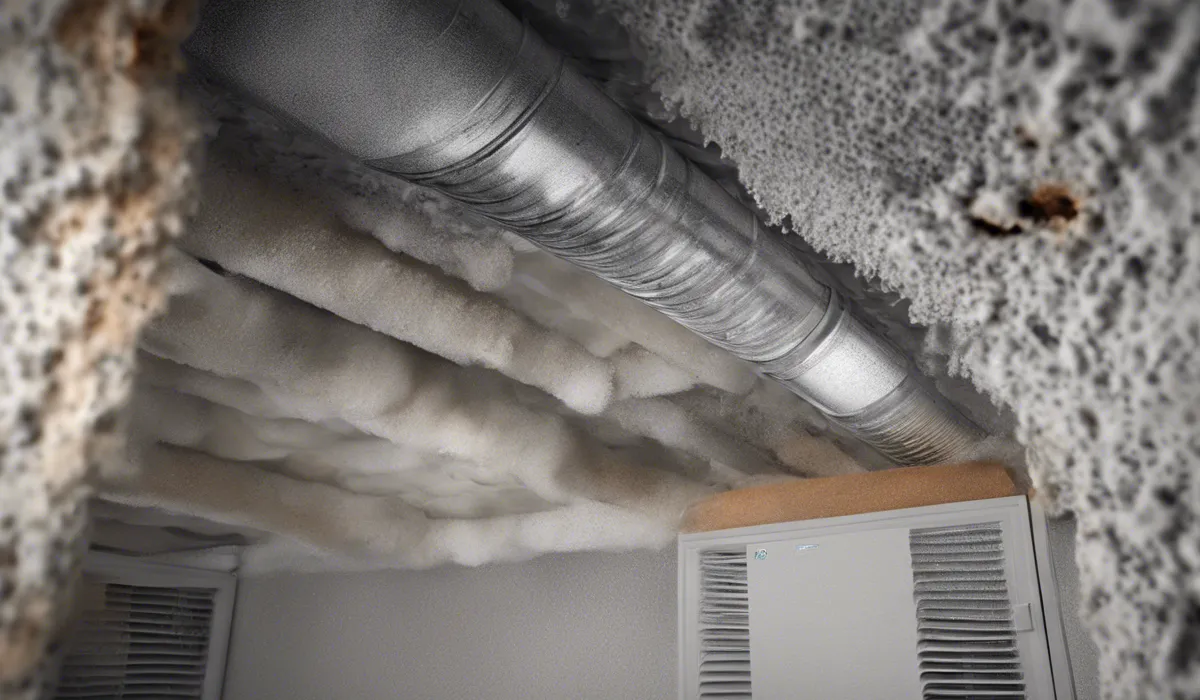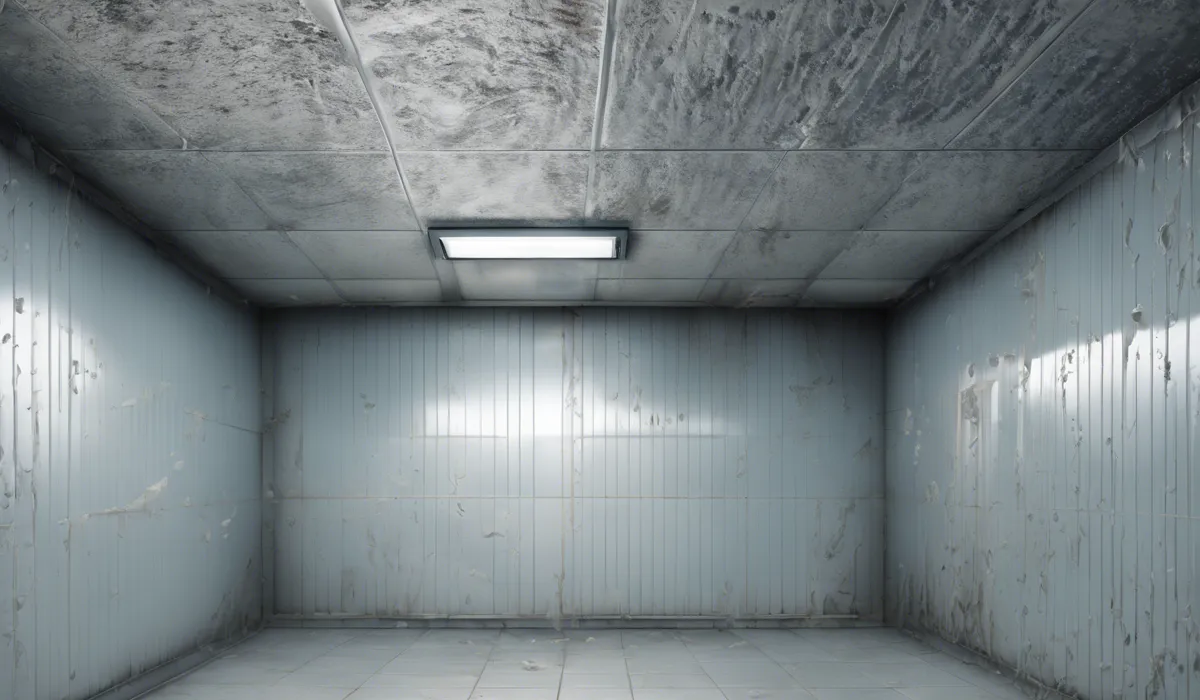To check for mold in air ducts, visually inspect for visible mold growth inside ducts or on vents. Smell for musty odors when the system runs. Use a flashlight to check dark areas. If suspicious, consider hiring a professional to take air samples for lab analysis.
Signs of Mold in Air Ducts

Identifying Unusual Odors
One of the first signs of mold in air ducts is an unusual, musty odor that becomes apparent when the HVAC system is running.
This scent is often a telltale sign of hidden mold growth within the system. If you notice such smells, it is crucial to investigate further as mold can have serious implications for indoor air quality and health.
Spotting Visible Mold
Visible mold growth around vent covers or duct openings is a clear indicator of a mold issue.
Mold can appear as black, green, or white patches and can often be found where moisture accumulates.
Regularly inspect these areas with a flashlight to check for any signs of growth.
Health Symptoms to Watch For
Residents experiencing allergies, headaches, or respiratory issues might be reacting to mold spores circulating through the air.
If these symptoms persist or worsen when the HVAC system is active, it’s a potential sign that mold is present in the air ducts.
Humidity and Condensation Levels
An increase in humidity and condensation within a property can create an environment conducive to mold growth.
It’s important to monitor humidity levels and ensure they remain within a healthy range to prevent mold from establishing itself in your air ducts.
Water Damage and Moisture History
A history of water damage or moisture issues in the home can lead to mold growth in air ducts.
Any past incidents involving water should prompt homeowners to be extra vigilant in inspecting their HVAC system for signs of mold.
Inspection Process for Mold in Air Ducts

Safety Precautions
Before inspecting air ducts for mold, it’s essential to wear proper personal protective equipment (PPE) such as gloves, masks, and goggles to protect yourself from inhaling harmful spores.
Inspection Tools and Equipment
Tools like screwdrivers, flashlights, and inspection mirrors are necessary to access and examine the ductwork.
Additionally, a camera or smartphone can help document any visible mold for further assessment.
Inspecting Visible Areas
Start with a visual inspection of all accessible areas of your HVAC system. Look for any signs of mold or moisture, especially in corners and around joins where mold is more likely to start growing.
Professional Mold Testing Kits
For more accurate detection, consider using professional mold testing kits. These kits can help identify mold spores in the air even when they are not visible to the naked eye.
Certified Mold Inspection
If you suspect a serious mold issue, hiring a certified mold inspector is advisable. They can perform a thorough examination of your HVAC system and provide professional insights and solutions.
Remediation and Prevention of Mold in Air Ducts

DIY Mold Cleaning Methods
For minor mold issues, DIY cleaning methods like using a mixture of water and white vinegar can be effective. Ensure to thoroughly dry the area afterward to prevent mold from returning.
Professional Mold Remediation Services
When faced with extensive mold contamination, it is crucial to call in professional mold remediation services.
They have the expertise and equipment to safely and effectively remove mold from your air ducts.
Air Filter Maintenance
Cleaning and replacing air filters regularly can help prevent mold spores from circulating through your HVAC system.
Ensure you use the right size and type of filter for optimal performance.
Proper Ventilation and Humidity Control
Ensuring proper ventilation and controlling humidity levels in your home are key to preventing mold growth.
Use dehumidifiers and exhaust fans to help maintain a dry and healthy environment.
Regular HVAC Maintenance
Routine maintenance of your HVAC system is vital for preventing future mold growth. This includes regular inspections, cleanings, and repairs to keep the system in good working order.
FAQs About Checking for Mold in Air Ducts
How can I visually inspect my air ducts for mold?
You can inspect your air ducts for mold by looking for any visible mold growth inside the ducts or on vents, using a flashlight to illuminate dark areas.
What smell should I be aware of when checking for mold?
Be aware of musty odors when your HVAC system runs, as this can indicate the presence of mold in your air ducts.
Is it necessary to hire a professional to check for mold in my air ducts?
While you can perform a basic inspection yourself, if you suspect mold growth, it is advisable to hire a professional to take air samples and provide a detailed analysis.
Can I check for mold in air ducts myself?
Yes, you can perform an initial check for mold in air ducts yourself by visually inspecting and smelling for musty odors when the system is running.
What should I do if I find mold in my air ducts?
If you find mold in your air ducts, it is important to contact a mold remediation specialist to properly clean and remove the mold to ensure the health and safety of your home environment.
Final Thoughts
Checking for mold in air ducts involves a visual inspection for visible growth and a smell test for musty odors when the HVAC system is operational.
Using a flashlight can help inspect dark areas. If mold presence is suspected, it’s advisable to seek a professional who can perform air sample analysis to confirm mold growth.
